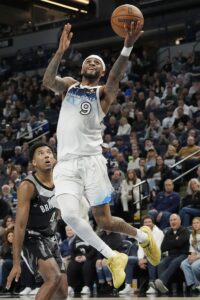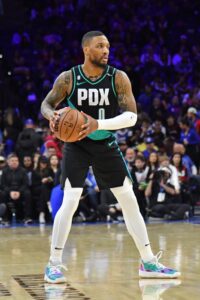While it’s not uncommon for restricted free agency to play out slowly for certain NBA players, it’s rare for so many high-level RFAs to remain unsigned a month after the July moratorium lifted. Jonathan Kuminga (Warriors), Josh Giddey (Bulls), Quentin Grimes (Sixers), and Cam Thomas (Nets) continue to negotiate with their respective teams after wrapping up their rookie scale contracts earlier this summer.
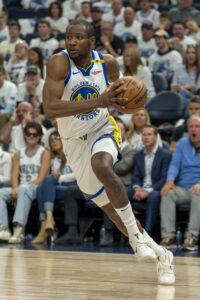 While we wait for resolution on those top four RFAs, it’s worth taking a closer look at the important dates and deadlines that apply during the restricted free agency process, including both the ones that have already passed and the ones still to come.
While we wait for resolution on those top four RFAs, it’s worth taking a closer look at the important dates and deadlines that apply during the restricted free agency process, including both the ones that have already passed and the ones still to come.
Here’s the breakdown:
June 29: Last day to tender a qualifying offer to a player eligible for restricted free agency
A player is eligible for restricted free agency if he’s a former first-round pick who is wrapping up the fourth year of his rookie scale contract or if he’s a former second-round pick or undrafted free agent who has been in the NBA for no more than three years.
If a player meets that criteria, a team must issue a qualifying offer to make him a restricted free agent. The qualifying offer is a one-year contract offer whose exact value is determined by an existing formula. While the player has the option of signing that qualifying offer, it can also serve as a placeholder that gives the player’s team the right of first refusal in the event he signs an offer sheet with another club.
We go into far more detail on how qualifying offers and how they’re calculated in our glossary entry on the subject. The headline here is that June 29 is the last day they can be issued — a player who doesn’t receive a qualifying offer on or before that date will instead become an unrestricted free agent.
Teams typically don’t issue qualifying offers far in advance of this deadline even if their decisions are relatively straightforward ones. In 2025, for instance, 30 of the 37 players who received QOs got them on either June 28 or June 29, per RealGM.
July 13: Last day for a team to unilaterally withdraw a qualifying offer
While a player can accept his qualifying offer as soon as he receives it, most QOs remain unsigned at the start of free agency, opening the door for a team to rescind its qualifying offer without the player’s approval.
For instance, on July 1 of this year, the Bucks withdrew their qualifying offer to Ryan Rollins, who began the league year as a restricted free agent. Rescinding that QO made Rollins an unrestricted free agent and meant he no longer had the option of accepting the one-year, $2.6MM offer.
In that case, the Bucks’ decision was about maximizing their cap room — withdrawing Rollins’ qualifying offer slightly reduced his cap hit, creating a little extra spending flexibility for the team to sign Myles Turner. Milwaukee retained Rollins’ Early Bird rights when he became an unrestricted free agent and was able to eventually re-sign him to a starting salary ($4MM) that exceeded his QO. So that scenario was a win-win for the player and team, but that isn’t always the case when a qualifying offer is pulled.
After July 13, a team can no longer unilaterally withdraw a player’s qualifying offer, which means that any rescinded QO on July 14 is a result of a mutual decision between the team and player.
This situation played out with multiple two-way restricted free agents this summer — Enrique Freeman (Pacers) and Isaiah Crawford (Kings) agreed to have their QOs withdrawn after July 13, which made them unrestricted free agents and allowed them to sign two-way deals with new clubs (the Timberwolves and Rockets, respectively).
October 1: Deadline for a restricted free agent to accept his qualifying offer
Between July 13 and October 1, a restricted free agent has the security of having his qualifying offer as a fallback plan, knowing that his team can’t take it off the table without his approval.
That doesn’t necessarily mean an RFA who remains unsigned on July 14 won’t get a deal done until that Oct. 1 deadline gets close, but the lack of any other deadlines before October results in little immediate urgency during late July and August. That’s one reason why we’ve seen little movement on Kuminga, Giddey, Grimes, and Thomas in recent weeks.
If the October 1 deadline passes without a player signing his qualifying offer, he remains a restricted free agent but would no longer have the option of accepting his one-year QO, which would significantly reduce his leverage.
It’s important to note that the October 1 deadline isn’t necessarily a hard and fast one — it can be pushed back as long as the team and player agree, and that can be done multiple times. For example, the two sides may initially agree to delay the deadline back to Oct. 15, then two weeks later decide to push it back again to November 1. However, that date can’t be postponed indefinitely…
March 1: Very last day for a restricted free agent to accept his qualifying offer; deadline for an RFA to sign an offer sheet
A team and a restricted free agent aren’t permitted to push the deadline to accept a qualifying offer beyond March 1. If an RFA still doesn’t have resolution on his contract situation by that date, his QO would go away, meaning he wouldn’t be able to accept it on March 2.
A restricted free agent also isn’t eligible to sign an offer sheet with a rival team after March 1. That means that if he hopes to play in the NBA during that season, his options between March 2 and the end of the season would essentially be down to one: Work out a new agreement with his current team.
If a restricted free agent goes the entire season without signing any sort of contract, he doesn’t become unrestricted the following year. His current team has the ability to once again tender him a qualifying offer by June 29 with the same terms as the previous QO, and if the club issues that offer, the process would begin all over again for a second year.
Essentially, a restricted free agent’s options only get worse once October 1 (or the newly agreed-upon QO decision deadline) passes, which is why we should probably count on resolution for this year’s top RFAs well before the regular season gets underway.
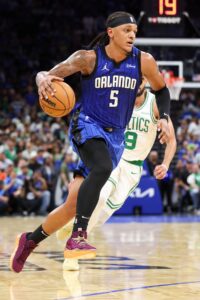 [RELATED:
[RELATED: 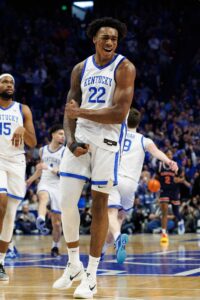 Boston Celtics:
Boston Celtics:  While we wait for resolution on those top four RFAs, it’s worth taking a closer look at the important dates and deadlines that apply during the restricted free agency process, including both the ones that have already passed and the ones still to come.
While we wait for resolution on those top four RFAs, it’s worth taking a closer look at the important dates and deadlines that apply during the restricted free agency process, including both the ones that have already passed and the ones still to come. Chicago Bulls
Chicago Bulls